Mass Replacement Of School Principals In Iran Sparks Controversy
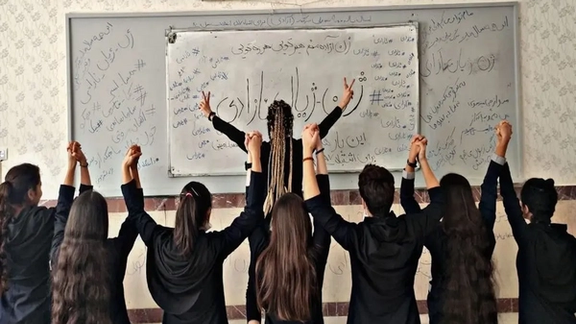
Iran's Minister of Education has replaced over 20,000 principals in a move that many see as an attempt to purge schools after nationwide protests.

Iran's Minister of Education has replaced over 20,000 principals in a move that many see as an attempt to purge schools after nationwide protests.
Reza Morad Sahraei revealed on Thursday that 7,000 schools have been earmarked for participation in the “transformation plan”, after many school students took part in anti-government protests.
The plan will be implemented in 5,000 schools in the current Iranian year ending on March 20, 2024, with a commitment to continue the changes, added Sahraei.
It appears that the purge, which began with universities, has now extended to schools. Since the commencement of anti-regime protests in September 2022, the Iranian government has dismissed scores of university professors.
Etemad, a prominent reformist daily in Iran, published an article in August highlighting 52 professors who have faced dismissal, forced retirement, or teaching restrictions.
Earlier in August, the same publication released a list of 157 tenured professors who were terminated due to their critical and dissenting views, spanning from 2006 to the end of August 2023. The extensive purging effort encompasses not only tenured faculty but also non-tenured lecturers who are being replaced by professors with a more "religious" and "revolutionary" orientation.
The notion of "political purification," as described in Iranian media, goes beyond educational institutions and encompasses various other organizations and institutions where regime hardliners are sidelining their rivals. The term "purification" was coined by former Parliament Speaker Ali Larijani to describe the actions of the ultraconservative allies of President Raisi, who seek to consolidate government power by marginalizing other politicians and officials.
According to some reports, President Raisi intends to introduce 15,000 "revolutionary" professors into academic faculties nationwide.
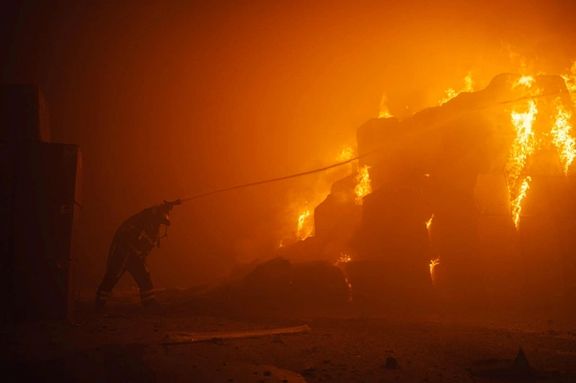
Amid accusations of Iran supplying military equipment and drones to Russia, President Ebrahim Raisi has criticized financial and military aid to Ukraine.
In an interview with RT Spanish, Raisi attributed the conflict between Moscow and Kiev to NATO's ambition to expand its influence into multiple countries and establish military bases not only in Ukraine but in various other counties.
Raisi reiterated Tehran's claim that "Those providing aid, including financial and military support to Ukraine, are not seeking an end to the war but rather its prolongation at any cost." The allegations surfaced despite ongoing reports from both Kiev and US officials about Iran's military support to Russia.
Iran, however, continues to deny any involvement in providing drones to Russia. Foreign Minister Hossein Amir-Abdollahian earlier reiterated, "Our stance on the Ukraine issue is clear and transparent, and our foreign policy remains unaffiliated with any party."
Sor far, the Ukrainian Air Force has reported downing hundreds of Iranian-made combat and kamikaze drones, specifically Shahed-131 and Shahed-136, deployed by Russia in its offensive. Multiple countries, including the United States, the United Kingdom, the European Union, Australia, and New Zealand, have imposed several rounds of sanctions on Iran due to alleged drone provision in the Ukraine conflict.
Raisi also emphasized the growing relationship and cooperation between Iran and Russia across various domains. He concluded, "Today's challenges have not impacted our strategic relationship with Russia, which remains unaltered by global developments."

Iran has received thousands of Achaemenid-era clay tablets from the United States in the latest such instalment after decades of efforts to repatriate the antiquities.
Touted by the state media as “souvenirs of president's US visit,” a total of 3,506 Achaemenid tablets were returned home by the plane carrying President Ebrahim Raisi, who addressed the 78th session of the United Nations General Assembly during his visit to New York.
“The tablets of the Achaemenid Empire, which were being kept in the United States and the Center for East Asian Studies at the University of Chicago (CEAS) for 84 years, were repatriated to Iran. The tablets were originally set to stay there for three years for study purposes,” Raisi told reporters upon arrival at Tehran’s Mehrabad Airport.
These tablets, on loan from Iran to the Oriental Institute of the University of Chicago since 1935, were transported in nine 75kg boxes. The university had received approximately 30,000 tablets or tablet fragments, which were reportedly produced during the reign of Darius I, commonly known as Darius the Great. He served as the third King of Kings of the Achaemenid Empire, reigning from 522 BC until his death in 486 BC. These artifacts were discovered at the ruins of Persepolis, the capital of the Persian Achaemenid Empire (6th – 4th c. BC) in southern Iran.
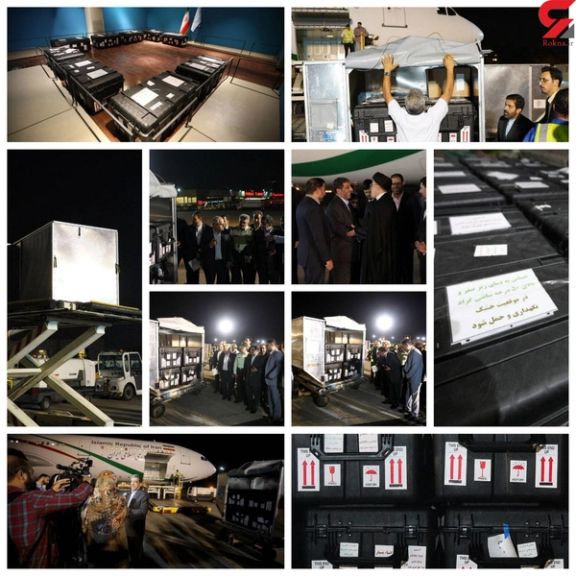
In August, Iran’s deputy cultural heritage minister announced that the United States had agreed to return over 20,000 Achaemenid clay tablets to Iran within months. Ali Darabi said, “More than 20,000 Achaemenid tablets belonging to Persepolis will be returned from the US by the end of this year.”
The last batch of these artifacts returned to Iran in 2019, consisting of 1,783 objects from Chicago’s Field Museum of Natural History. The fate of these ancient Persian artifacts was determined by a US Supreme Court ruling in 2018, which allowed Iran to have the tablets that were initially blocked due to a court case initiated by American survivors of the 1997 Hamas terror attack in Israel. However, the reimposition of US sanctions on the Islamic republic since August 2018 complicated the return of the antiquities to Iran.
A significant portion of the tablets was returned in three batches between 1948 and 2004, before the court ruling. The plaintiffs had demanded the seizure of the tablets and their sale in exchange for the $71.5 million that Iran was ordered to pay in the case.
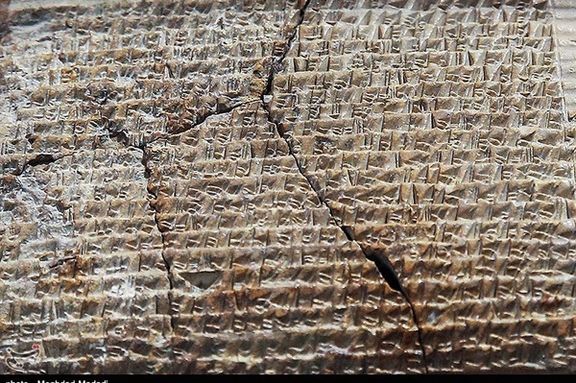
Following the delivery of the last batch, Matthew Stolper, Professor Emeritus at the Oriental Institute, emphasized the scientific significance of these works. He highlighted that the artifacts had contributed to a better understanding of “how (Achaemenid) society was organized and how basic institutions of control and support worked.” Stolper also mentioned that they had learned the names of some important individuals in the ruling class and gained insights into how they governed.
Currently, the regime seems reluctant to acknowledge the ancient Iranian empire – once the largest empire in the world – amid rising popular support for exiled Prince Reza Pahlavi, the heir to Iran’s last royal dynasty that ruled for almost 54 years between 1925 and 1979, who has become a leading opposition figure in recent years.
Since 2017, the Islamic Republic has implemented security measures and even blocked roads leading to Pasargadae and Persepolis to prevent people from visiting these Achaemenid sites, fearing that visitors of these monarchist symbols might hold protests against the clerical regime. These measures have intensified since October 2016 when thousands of people gathered at the historical site and chanted antigovernment slogans, such as "Iran is our homeland, Cyrus is our father."
Since news about the clay tablets has emerged, a large number of Iranians are voicing concern online that the regime may auction off these pieces of Iranian national heritage or destroy them with mismanagement. The administration of former Iranian President Mahmoud Ahmadinejad and the Revolutionary Guard are accused of the bagging carpets of Saadabad Palace in Tehran.
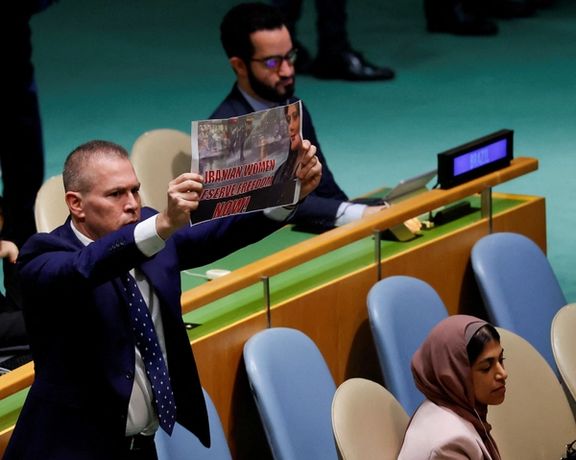
Israel's UN ambassador photographed the poster of an Iranian demonstrator outside the UN in New York and held it up during the speech of Iran's president Ebrahim Raisi.
The photograph used by Israel’s UN envoy, Gilad Erdan, on Tuesday to protest the “Butcher of Tehran” Raisi in the United Nations General Assembly electrified social media and swathes of the Iranian diaspora.
Hamid Charkhkar, a professor of biomedical engineering at Case Western University, told Iran International that "My wife, Fatemeh, and I came from Ohio to New York to join other Iranian-Americans protesting against Raisi and his delegation. It felt unjust that he, a man responsible for deaths thousands of innocent Iranians, was given a US visa for the UN General Assembly. I had a sign with Mahsa Amini's picture on it, saying 'Iranian women deserve freedom now.' To our surprise, Israel's UN Ambassador, Gilad Erdan, walked up to our protest, clearly showing support for our cause."

Charkhkar added “He was drawn to my sign and asked if he could take a photo of it. Later, we saw on Twitter that he held my sign during Raisi's UN speech. I want to thank Ambassador Erdan. He helped raise the voices of Mahsa and many young Iranian youth who suffered under the Islamic regime in Iran.
Charkhkar is a member of the Alliance Against Islamic Regime of Iran Apologists (AAIRIA) that seeks to the dismissal of the Iranian regime’s former UN ambassador, Mohammad Jafar Mahallati, from his academic post at Oberlin College in Ohio. Amnesty International has repeatedly accused Mahallati of covering up crimes against humanity with respect to the 1988 massacre.
Iran International reported that Erdan was the only diplomat to walk out during Raisi’s speech. The US government sanctioned Raisi for his role in the massacres of Iranians in 1988 and 2019.

The UN human rights commissioner's office has strongly criticized a newly enacted hijab law in Iran that has increased punishment for women who refuse to cover their heads.
The law imposes harsher penalties, including longer prison sentences and higher fines, on women who do not adhere to the country's strict Islamic dress code for head coverings and modest attire.
During a press briefing held in Geneva on Friday, Ravina Shamdasani, the spokesperson for the United Nations High Commissioner for Human Rights, condemned the legislation. She described it as both “oppressive and degrading.”
“We deeply regret the Iranian parliament’s passing of the new Chastity and Hijab Bill which vastly increases jail terms and provides for crushing fines on women and girls who do not obey the compulsory dress code. In that context, the Bill also targets vague notions of promotion of nudity or indecency.”
Shamdasani explained that under the new regulations, women and girls who fail to comply with the stringent dress code could now face up to 10 years in prison, a significant increase from the previous two-month term. Moreover, fines have been raised from approximately $12 to around $8,500.
The new law follows widespread protests after the tragic death of Mahsa Amini, a 22-year-old woman who died while in custody of the morality police in September 2022, just three days after her arrest, for allegedly not adhering to the Islamic dress code for head coverings.
“Our Office urges the Iranian authorities to take steps to eliminate this and all other forms of gender-based discrimination…We also call on the authorities to abolish all regulations and procedures whereby specifically women’s behavior in public is monitored,” added her statement.
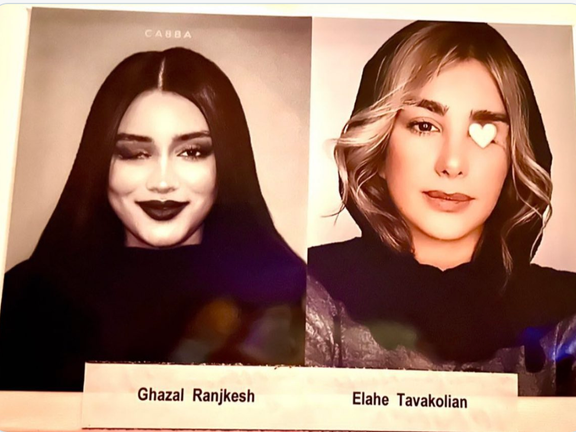
A human rights organization has revealed the identities of scores of individuals who sustained eye injuries when Iranian security forces fired shotguns at protesters.
Iran Human Rights Organization (IHR) emphasized in its Friday report that regime's security forces and plainclothes agents fired at the eyes of protesters, especially women, in a "systematic and deliberate" manner, with a very high degree of precision.
The IHR researchers confirmed 138 cases of eye injuries, with 43 individuals choosing to provide evidence of their injuries anonymously. The remaining 95 cases, including 8 children under 18, are documented in the report.
To put this in perspective, children account for 5% of eye injuries.
The data by the Norway-based organization shows that women comprised a significant 28% of those with eye injuries.
Last February, the IHR also disclosed the identities of 22 individuals who had lost vision in one or both eyes due to the systematic shooting by government agents.
The human rights group, through the publication of a new report, confirmed its previous assessment, stating that the shooting by regime forces at the eyes of protesters began from the very first days of the protests in September last year and continued extensively in various cities across Iran until November 21.
The majority of eye injuries resulted from pellets (metal and plastic), causing vision loss in one or both eyes. Other projectiles like paintball guns and teargas cartridges were also used.
More than 500 civilians were killed by security forces and thousands injured during the anti-regime demonstrations last year and early in 2023.






